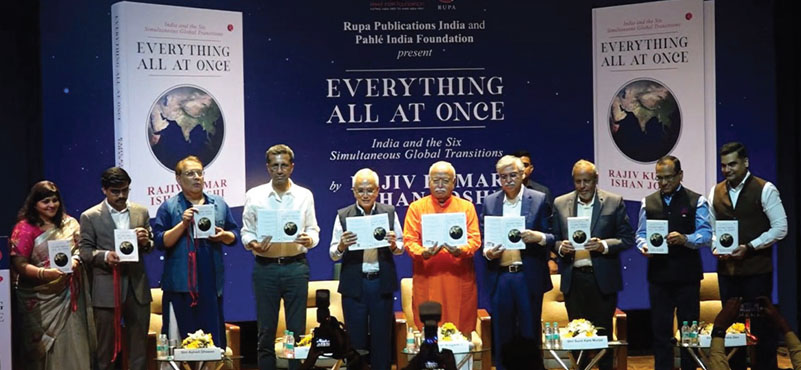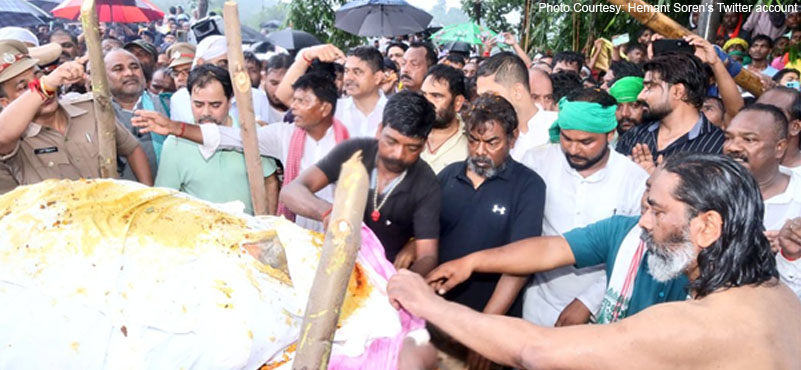A new book released shares perspectives for India to reach its goal of Viksit Bharat by 2047. There is much in the book that we might have thought, in silos, but never put forward as a package of ideas first, that need to be actioned now and here. On this occasion of the book release, which had RSS chief Mohan Bhagwat do the honours, a panel discussion brought forward some leading thinkers at the national level. Joining the panel were:
Sunil Kant Munjal, Chairman of Hero Enterprise, leader, philanthropist, educationist and the author of The Making of Hero; Professor S. Mahindra Dev, Chairman of the Economic Advisory Council to the Prime Minister; and Sri Ashish Dhawan, visionary investor, philanthropist, founder of Convergence Foundation, Central Square Foundation and Ashoka University.
The overlying theme was trust us as Indians, unleash the instincts of entrepreneurship, do away with as many regulations, create an environment of growth – inclusivity is just as critical. All at once, not as a series, we have little time left to achieve it all.
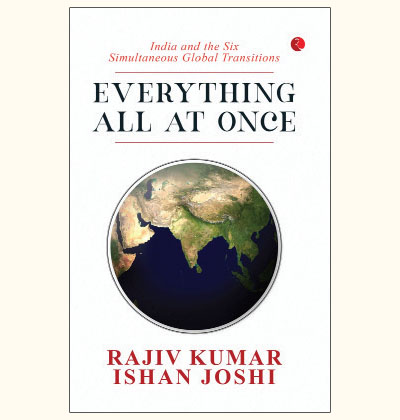 Ishan Joshi, co-author
Ishan Joshi, co-author
The book I’m here to briefly talk about emerged from discussions between the person I like to call my guru and myself, primarily on the critical intersection and between global geopolitics and economic trends in this time of intense flux.
The more we delved into the subject, and this was early days, maybe a year, year and a half ago, the more it dawned on us that the implications of this global churn for the Indian interest will be truly epochal. In fact, some of the earlier conversations left us out of breath, quite literally, because there were so many moving parts that we felt had to be factored in, to make sense of what was happening.
Therefore, the first task we set ourselves was to take a step back and formulate an analytical framework, within which to explore our intuitive reading of the profound global transitions, which are clearly underway. Our next step was to identify the most consequential of these transitions and critically examine the scenarios thrown up, both by their inter-connectedness and their simultaneity. It was a double whammy, as it were.
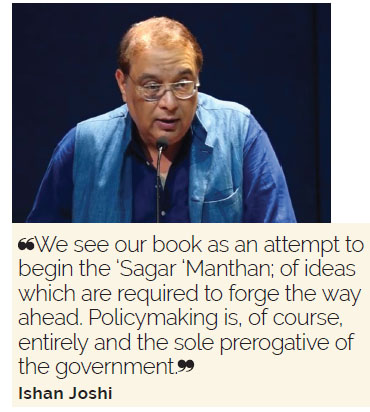 The six we chose, after a lot of back and forth, discussion, debate, as you could imagine, are the geopolitical transition, the transition of the global center of gravity from the transatlantic back to the Asia-Pacific after a 200-year-old, let’s call it a blip, the geoeconomic transition, the ongoing shift of economic clout from OECD nations to those of the global south, the transition away from carbon, and the technological transition.
The six we chose, after a lot of back and forth, discussion, debate, as you could imagine, are the geopolitical transition, the transition of the global center of gravity from the transatlantic back to the Asia-Pacific after a 200-year-old, let’s call it a blip, the geoeconomic transition, the ongoing shift of economic clout from OECD nations to those of the global south, the transition away from carbon, and the technological transition.
With these six in mind, we finally came up with the questions we felt India would need to address, not to just survive, but to shape, to its own advantage, these simultaneously occurring transitions. We didn’t have all the answers. We still don’t after, I think I can say safely, after writing the book. But we see our book as an attempt to begin the ‘Sagar ‘Manthan; of ideas which are required to forge the way ahead. Policymaking is, of course, entirely and the sole prerogative of the government.
But as an intervening stage, however, we have suggested strategies in this book that we hope will define a policy matrix to negotiate these transitions, which are truly very important for us at the level of a country, at the level of a company, at the level of the citizen. Truly it’s a game-changing moment.
I would like to mention at least the six or seven big takeaways which we think are very critical and important to what is happening around us.
The first of these, and it might be controversial to some, is that the end of Pax Americana as we have known it for the past 70 years, is likely now an accomplished fact. Though we don’t rule out the possibility of the US reinventing itself, as it has shown it can do in the past, it will be a very different beast from the post-World War II avatar that we have seen. We also argue that the end of Pax Americana was evident even before the advent of the current US administration. To that extent, it is a consequence and not a cause of Washington’s worldview.
Second, is the inexorable rise of China as an economic behemoth, as a significant military power, and a global leader in frontier technologies. We would be guilty of being ahistorical, despite our many issues and valid issues with them, but we would be guilty of being ahistorical if we did not understand and accept that we have to find a way to work with, in some broad accommodation, with the global superpower on the ascendant, which also happens to be our neighbor.
Third, the likely emergence of a global duopoly is another takeaway which we got from our work on producing this book. Whether within a stable or an unstable multipolar world, the likely emergence of this global duopoly will have implications. So, what are these, specifically for India’s ability to effectively exercise its strategic autonomy, is something which I’m sure would be exercising the minds of policy makers, or practitioners, and everybody else in between.
Fourth, the impact of import substitution policies across both the developed and the developing world as globalization morphs yet again and trade becomes increasingly impacted by geopolitics.
Fifth takeaway, the criticality of the carbon transition and the understanding that there cannot be a nihilistic tradeoff between citizens’ health, on one hand, and enhanced incomes, on the other. That just will not do. It is not acceptable, anymore to an entire generation of Indians.
Sixth, the categorical imperative for governance and regulation of AI and other frontier technologies. While advanced technologies such as Gen AI can help India pole vault the traditional linear growth path, they can also decimate critical thinking, not to mention jobs, academic rigor and state capacity. While it’s very, very important for India to invest time, effort, and resources in the development of advanced technologies, and I emphasize this, the development of advanced technologies, it’s equally important for us to evolve a consensus on their application in various spheres. These are two distinct things, and we must be clear about how we approach them, which are these spheres where the application needs to be prioritized, should maybe be articulated as a national goal.
Lastly, perhaps our most ambitious and audacious argument, if I may say so, is that we need to evolve a more holistic measure of growth than just GDP. In the book, we have tentatively termed it GWP or Gross Welfare Product.
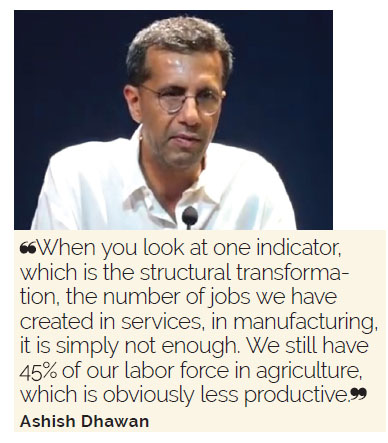 Ashish Dhawan
Ashish Dhawan
I think we are at a very interesting moment. We are seeing all this turmoil in the world. ‘Bharat mein’ there has been growth now since 1991 and we should be proud that we have come a long way as a country in terms of lifting hundreds of millions of people out of poverty.
But when you look at one indicator, which is the structural transformation, the number of jobs we have created in services, in manufacturing, it is simply not enough. We still have of our labor force in agriculture, which is obviously less productive and we have not managed to make a massive transformation into manufacturing and services. Vietnam, which is almost the same per capita income as India, of the labor force is in agriculture because they have created lots of jobs in manufacturing and services. And this is despite the fact that female labor force participation in Vietnam is . There, women are almost as active in the workplace as men.
I feel that at this critical juncture, with all this turmoil in the world, there are five, six things that we should focus on. Work has started on many things.
So first is area of deregulation. Government is already talking about deregulation in a very big way, very important, because License Raj went away, but Inspector Raj didn’t go away. And we have to really simplify, digitize, decriminalize in a very big way.
And largely this is to make it easy for the small and medium-sized enterprise. Big businesses, they know how to manage. SMEs and that is why we are full of midgets, dwarf SMEs that have not been able to grow because the rules are so difficult, the Inspector Raj is so prevalent. We need to make it simpler for the SMEs in India because they will be the engine of job creation going forward.
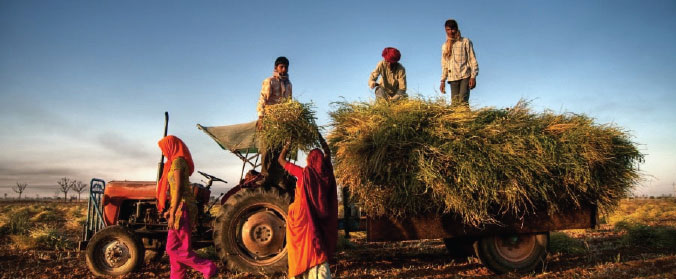
I feel this deregulation push is a very good one but it needs to be all pervasive across all departments in the centre, state issues, concurrent issues and we have to be bold, not incremental in terms of making these reforms. The mindset also needs to change from red tape to red carpet, China had red carpet mentality vs having a trust deficit. So, I think this is very, very important as we go forward.
Second issue is manufacturing. India has to find its place in the world in manufacturing. Right now, we are a very, very small share, of global manufacturing, of global manufacturing export. In this, through PLI, through new missions, work has started, like the semiconductor mission has been so successful. But I think the main area to prioritize is labor-intensive manufacturing. The big businessmen will lobby for capital-intensive sectors because they are mostly present in capital-intensive sectors. But in labor-intensive sectors, job creation will be the highest. By prioritizing them, we need policy to work. And policy holistically. Not just PLI or some support. But also, sometimes import duties are high, so they cannot export. There are many impediments.
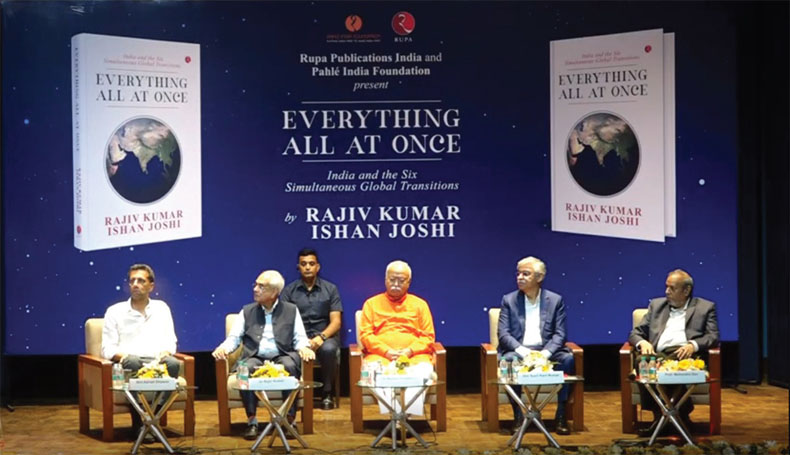
Third, there are many sectors in the service sector where more work can happen. I will just pick one, which is tourism. Tourism, as you all know, is a very, very labor-intensive sector. And India has such huge potential in terms of global tourism. If you take out NRIs, our global tourists are only of global tourists. Now given the beauty of India, given the heritage of India, given the diversity of India, we deserve to get a much, much higher share of global tourism. And this is like something that is shielded from tariff. So, setting up a destination management organization to solve for coordination, a CEO to drive each of the 50 hubs where tourism can increase. And again, tens of millions of jobs can be created.
The next one is urban. So, we know that we are sitting in NCR. NCR is a very big area. It accounts for almost of India’s GDP. And we need 50 growth hubs in India. We already have many growth hubs, urban growth hubs. ‘Ab unko successful banane ke liye’, obviously we can’t only think of the small city, but of the region, jaise NCR hai versus just Delhi. And also invest much more in infrastructure, so that the city ‘jo agar uska 10 kilometre radius hai ya 20 kilometre, it becomes a 50 kilometre radius, much broader’. So economic activity can spread out within that urban area, which has happened successfully in NCR. Investment is required, affordable housing is needed, and we need a push to bring in private investment in each of these cities. So, every rupee that government puts in should bring in 10 rupees of private investment. And there has to be a lot of outreach!
Next one is science and technology. I think we have a golden opportunity, with new developments, I think this is a perfect opportunity to attract Indians back in every sphere. In science and technology in particular, because we account for the largest share alongside China of PhDs in America, we have the largest share of science and technology workers in the major companies in America. So, creating the right policy to bring them back.
Final one is our human capital. ‘Humare jo log hai, basic education jo us par bahut focus hai, ab Nipun Bharat ki wajah se’. We are seeing improvement to continue in that early childhood education. ‘But ye jo apprenticeships hai’, which I think government has said, apprenticeships is a priority. This has started but needs to improve and be taken more seriously by the corporate sector. I feel that corporate sector is not taking it seriously as opposed to 3 million apprenticeships have been done through NAPs, this needs to become tens of millions. And learning by doing, learning by earning is the best way to be skilled, as opposed to being skilled in a vacuum.
So, these are just some ideas. I feel that our country is so well-positioned. Viksit Bharat is only 22 years away. RSS has done fantastic work for 100 years at the grassroots level and has come up with deep interest in policy. And I just wanted to put few ideas on the table alongside Rajivji’s book so that we can all work together to build a nation that is not only successful in economic terms but in terms of well-being as well.
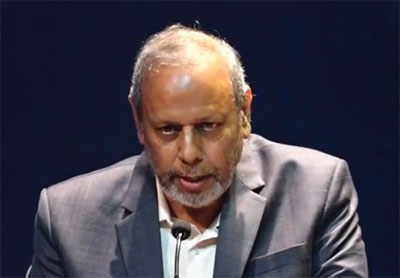 Professor Mahendra Dev
Professor Mahendra Dev
So, it is a timely contribution to the present policy discussions, but as he mentioned, he predicted two years back all these discussions. It also provokes for more discussion on policy issues. The six chapters contain very good analysis on six simultaneous global transitions, but I like the last chapter also, the epilogue given the time constraint of 10 minutes, I’ll focus my comments on the issues discussed in the chapter and epilogue.
First is Viksit Bharat. So, the goal of India is to become a developed country in terms of per capita income. Some $14,000 by 2047, the book says we can achieve. But the share of GDP in the world, it was in 1850, it was So, whether we can achieve that glory again that may be slightly difficult, but we can achieve at least more than what we have now, and then faster.
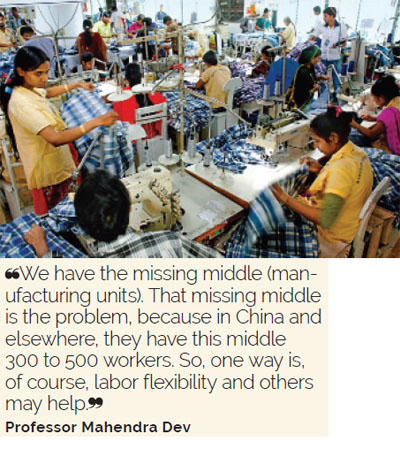 Then what are the sources of growth? Investment and exports are the drivers. Hopefully the private corporate sector has a lot of cash now on their books, so the uncertainty is going. This is the opportunity for the private sector to invest more and participate in the growth process. Exports, in spite of the protection policies, I think our share from 2 to 3 percent, we can increase still further. The other sources of growth are our young workforce, the human capital mentioned, digital technology, urbanization and increase in women’s participation.
Then what are the sources of growth? Investment and exports are the drivers. Hopefully the private corporate sector has a lot of cash now on their books, so the uncertainty is going. This is the opportunity for the private sector to invest more and participate in the growth process. Exports, in spite of the protection policies, I think our share from 2 to 3 percent, we can increase still further. The other sources of growth are our young workforce, the human capital mentioned, digital technology, urbanization and increase in women’s participation.
But Viksit Bharat doesn’t mean only growth, it also includes inclusive growth and sustainable and climate smart resilient growth. The book says we should achieve equity through Dindayal Upadhyay’s Anthogya concept and also achieve growth with low carbon emissions. I think India is doing both; extreme poverty has declined significantly and also on carbon, I will come back. Like Gross Happiness Index, the book says we should have a global welfare product. I think there is no trade-off between the two, GDP and global, both can go together because India’s human development indicators are rising and hopefully will reach OECD levels after some time.
Coming to Niti Astanga, the chapter talks about eightfold path. At the outset, in this eightfold path, Indian states also play an important role, because it’s a cooperative federalism. So, on the first one, social capital, it talks about, I think government is following, ‘sabka saath, sabka vikas and sabka vishwas’, in true spirit. So, this is important for even economic growth. Second, transformation of governance. In fact, in 2016, we have changed this in the annual confidential report. But getting the feedback from many people, and that has improved the accountability. And the governance has significantly increased. And also, we have to improve the state capacity. And governance is important at state level and decentralization to panchayats and municipal councils. Because in other countries, in China, decentralized funds are about , and in the US and Brazil it’s about In India it’s We have to also do the decentralization.
Third, the road to net zero. India is on the right track. It already achieved the target of renewable energy. Rightly, the book mentions that we should achieve higher growth with less carbon emissions. Overall, there can be synergy in achieving the objective, but sometimes there can be tradeoffs between growth and the environment. For example, how to reduce the dependence on coal over time, it sometimes can be trade-off because there is a lot of employment, we depend on energy.
Fourth, on the employment, the quality of employment is the issue because we still have 85 to in informal sector and the government is trying to increase the formal sector. So, unemployment is mostly among educated and youth. Employability is of course the problem. As mentioned, the manufacturing services are also important. They are becoming more skill intensive. So that’s why we need to improve the skills.
Another important thing which is mentioned is the structural change to manufacturing services. One of the things is that our manufacturing per unit has 10 workers or 10 to 50 workers, majority of them, and others that are very large. So, we have the missing middle. That missing middle is the problem, because in China and elsewhere, they have this middle 300 to 500 workers. So, one way is, of course, labor flexibility and others may help. So that is important. Of course, PLI schemes help.
The fifth one is on AI for attaining globally comparable standards and the book says we should have personalized, for education and health, we should have AI. So, in fact, it is increasing. I’ve seen in Hyderabad how the hospitals are using the personalized health services. But there is a debate on AI and employment, but it is overblown. I think, one of the Nobel Prize economists, Darren Acemoglu, who got recently, he said that only of jobs will be affected. And he believes that excitement around artificial intelligence adversely impacting jobs may be overblown.
On last 7th and 8th, Autonomy and Foreign Policy and Global South Cooperation, India’s foreign policy is now called multi-alignment and friendly with all countries, keeping our own interest in mind. So, it’s navigating the tripolar world of USA, China and Russia. Another transition apart from the six global transitions is not respecting the multilateral institutions, WTO, WHO, UN, where there is also continuous demand to reform multilateral development banks like the World Bank and IMF. And India played an important role in global leadership in the last one decade or so by participating in G20, BRICS and many other forums in the last decade or so. So, this global leadership role of India is being recognized.
South-South cooperation is also important as many issues including multilateralism, debt problems, climate change resilience can be discussed and implemented at ground level. To conclude, at the domestic level, non-economic factors also play an important role, like culture, ethics, morals. They have also impact on this eightfold and to achieve Viksit Bharat.
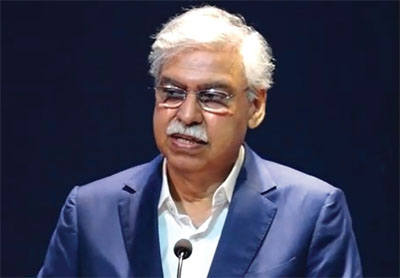 Sunil Munjal
Sunil Munjal
It is clear that as a nation growing at , gives us the distinction of being the highest growth-large economy in the world. But it’s just not good enough for us. I think it’s important for us to pat ourselves on the back, but at the same time be aware, it is just not enough.
There are 800 million people being given free food grain by the government of India. These are people who actually and genuinely need this. So, there is a need for us to address growth in a different perspective and in a much higher sense of urgency. Because if you think back in history, when have revolutions actually taken place? And you can go back as far as you like, the Chinese Revolution, the French Revolution, the Russian Revolution, every one of them.
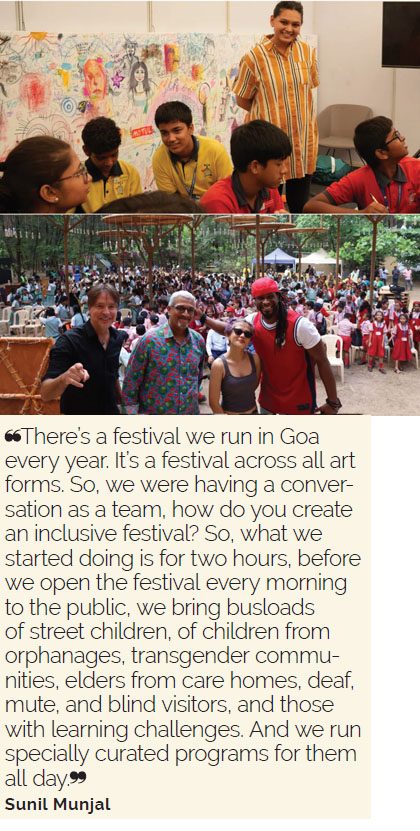 Every one of them actually happened when the gap between the top and the bottom grew, and the bottom got agitated enough, pushed back. The gap between the top and the bottom has grown so significantly, it’s left some people behind, and that is not okay.
Every one of them actually happened when the gap between the top and the bottom grew, and the bottom got agitated enough, pushed back. The gap between the top and the bottom has grown so significantly, it’s left some people behind, and that is not okay.
So, we have two or three kinds of exclusions. One is the economic exclusion. We also have a social exclusion that has taken place.
There’s a festival we run in Goa every year. It’s a festival across all art forms. So, we were having a conversation as a team, how do you create an inclusive festival? So, what we started doing is for two hours, before we open the festival every morning to the public, we bring busloads of street children, of children from orphanages, transgender communities, elders from care homes, deaf, mute, and blind visitors, and those with learning challenges. And we run specially curated programs for them all day.
Because we also want the general public to be able to interact with those who are normally excluded. Because if you think about it, where do these folks actually figure in our normal programs, in our projects, in our lives? So that was an attempt to see, can we actually become inclusivity? And for some, we found it is a life-changing experience. In our university, which we run like a liberal arts university, while it is not a liberal arts university, but run it like a liberal arts university, we have made some of our electives compulsory.
So, it’s a little bit of an oxymoron. They are electives, but we made them compulsory. And the first one is ethics and moral dilemma. The second is on soft skills. And the third is on design thinking, so that you approach anything in life with a potentially higher chance of success and a better outcome. The fifth is cross discipline.
So even if you want to be an engineer, you have to earn a liberal arts credit. And the flip side is true as well. And the idea of this, I think, was mentioned, I think Ashish mentioned, this interdisciplinarity is an essential requirement. We have focused so much in India, STEM as a push that has helped us create a large number of doctors and engineers, but we’ve forgotten somewhere, the softer aspects of life are getting left behind. Civilizational issues have become less important, which is why I appreciate what you have been doing is talking about social change at the same time as the economy changes, as geopolitics change, as technologies change. And we must, of course, be aware of all of them.
Which is why, Rajiv, when you point out all of these six parallel issues, I think it is critical. We do not have the luxury of time to do these in a series any longer. Otherwise, we will continue to talk of India’s greatness in the long distant past and its potential.
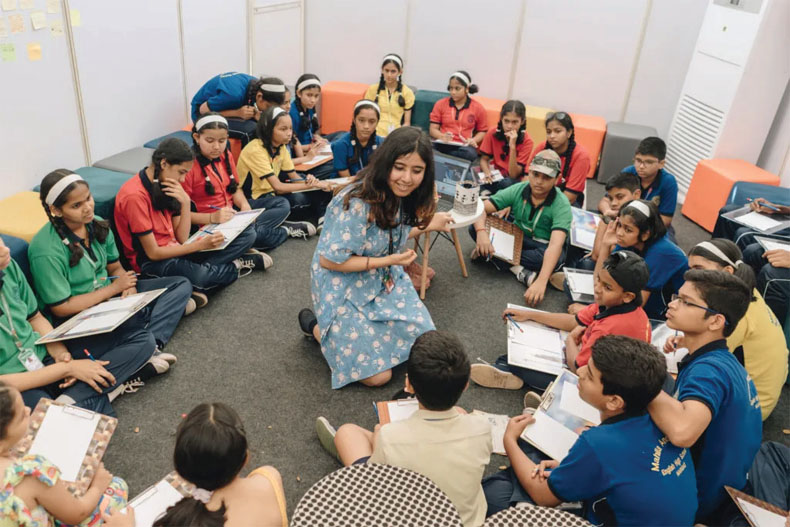
Why should we? Why should we look at ourselves second to anybody else? I think we have the potential, we have the wherewithal, but we need to do it practically and realistically. I think that is important. Because only getting too full of ourselves is also a risk. Because every time we’ve done very well, we’ve also tripped every now and then.
So, it’s important for us to do this in a realistic manner. If India has to improve, all of India has to improve. We need to get people off agriculture, but not off the farms, not off the rural areas. We need to create more value-add post-harvest and we need to create a non-agri -rural economy. And I can give you an example of what is possible.
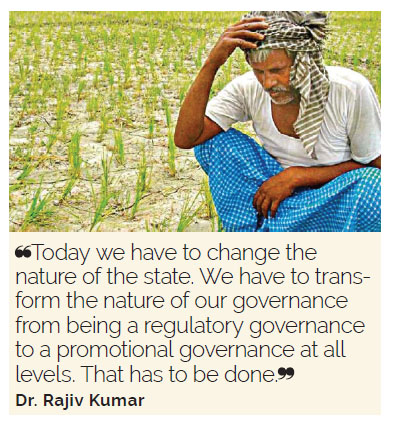 Since you spoke about India’s GDP in the past, where do you think it came from? What were we trading? We were global leaders in trade. Other than spices, it was our crafts. It was our handicrafts. It was our textiles, our woodwork, our ivory, our bell metals, and a whole host of initiatives on which India was a global leader.
Since you spoke about India’s GDP in the past, where do you think it came from? What were we trading? We were global leaders in trade. Other than spices, it was our crafts. It was our handicrafts. It was our textiles, our woodwork, our ivory, our bell metals, and a whole host of initiatives on which India was a global leader.
Now, those skills actually still exist in rural India. But sadly, the artisans do not have touch with the contemporary market and are making the same thing they were making 500 years ago. So, we did some work, Mohan Bhagwatji, it is possible to create over 100 million economic opportunities that are sustainable. If we can contemporize these skills, that is necessary. We need also to make sure, because we do amazing work in India in islands of excellence. That’s fantastic, but it’s just not enough. We need to figure out a way to allow this excellence to leak out of these islands because our scale cannot do with small initiatives. Our diversity needs that push of size, scale, and speed all at the same time.
So, I would add one more word to your book. While you say everything all at once, I would say everything, everywhere, all at once. It has to be that way. Let’s make policy which recognizes that Indians are our people, to trust our own individuals, our own companies, our own enterprises, give them free run.
I have no doubt that we will find a different pace of growth and development if we can do that. We used to talk of some of these technologies as a possibility, as a dream, even five years ago. Six years ago, I had a chance to visit NVIDIA in Silicon Valley. And they showed us a working model of generative AI.
And I came back to India, and I said, this is super exciting, and it’s super scary. So, people said, why would it be scary if you’re using something new? I said, because all in our head, we had this concept that we will always be ahead of machines. Machines have no emotion. They do not use logic. They demonstrated such a high speed that it appears to be they can replicate emotion, and they can appear to be logical.
So, we need to figure out a way to use this technology, not get abused by it. So, I think a book like the one that you’ve written is certainly a very valuable piece of work. We need to get down and look at how we can do this, not as India as a part of the global value chain, but within India. There are many Indias within India right now. If you take the South and the West of India and you look at economic growth, it is very different from the rest of the country. Very, very different.
And rather than having people constantly migrating, we do need to find a way to create higher growth in different parts, sustainable growth, growth that is eco-friendly, and all of this is possible.
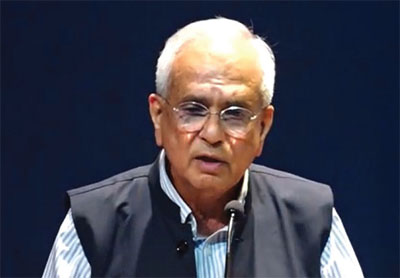 Dr. Rajiv Kumar, co-author
Dr. Rajiv Kumar, co-author
We have to undertake an intellectual churning in this country so that we can come up with our own model of development. Material prosperity, protection of environment and taking care of the last people in the last decile of the population – this can be done.
What I wanted to say is, as he said, we need everyone’s support, everyone’s trust, and everyone’s participation. The biggest thing in that, is that we have to believe today that whenever our country progressed, it progressed through private enterprise. So today we have to change the nature of the state. We have to transform the nature of our governance from being a regulatory governance to a promotional governance at all levels. That has to be done.
And the last thing that I want to tell you is that we will have to look for answers in our heritage. For example, in public health, the best answer is in our Ayurveda. But today, I have tried a lot in Ayurveda, it is still seen with a narrow view. I think it is important to now change this.
Similarly, we have natural farming in our heritage. Because we can save ourselves only from natural farming. If we keep adding more chemicals, it will become difficult. So, we will have to do this.

